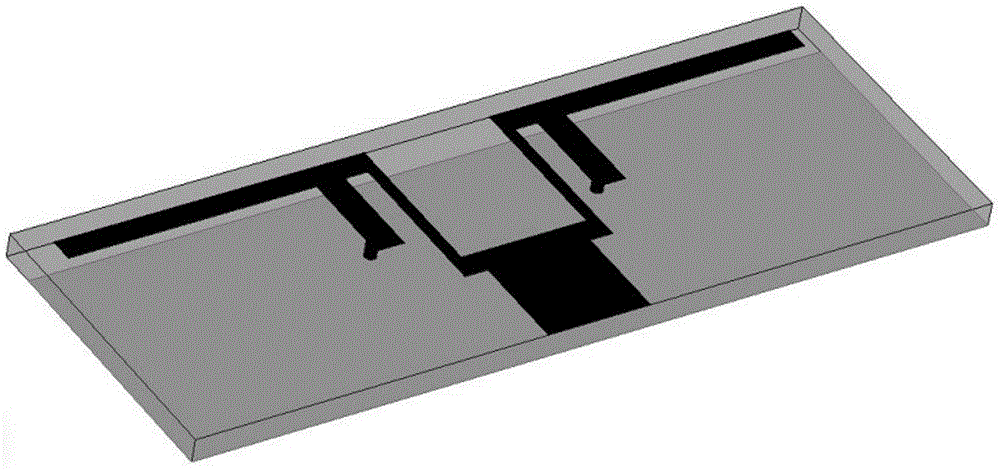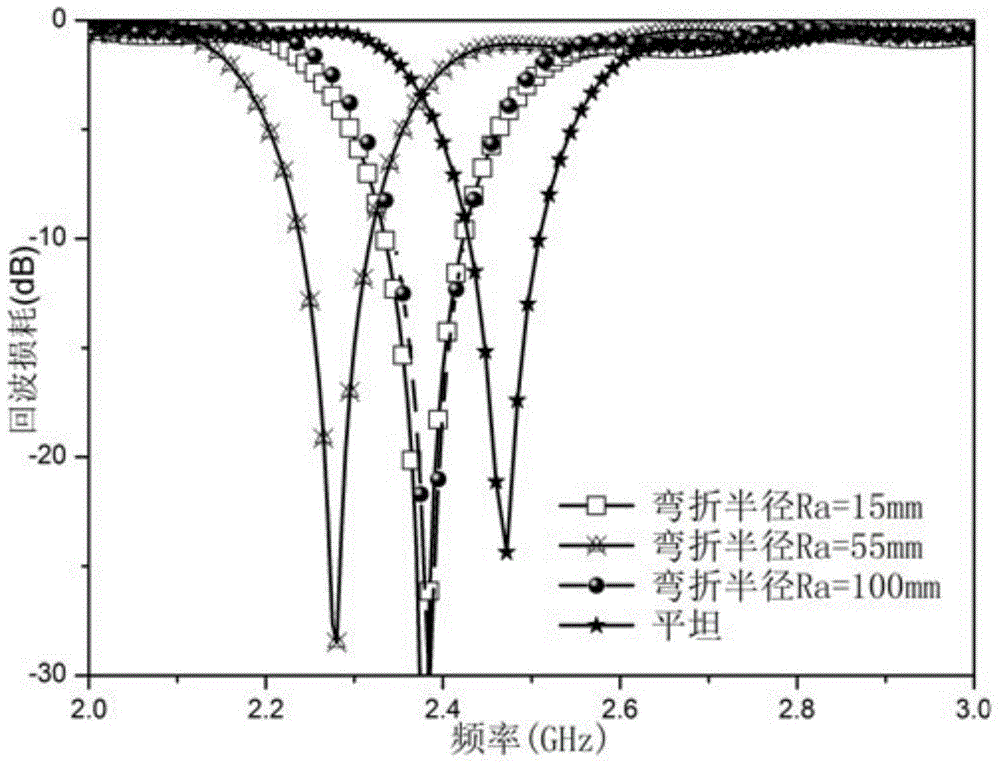Wearable shunt-fed antenna
An antenna and feeder technology, which is applied in the field of wearable and feeder antennas, can solve the problems of unreachable S-parameters, decreased antenna signal strength, and unfavorable integration and manufacturing.
- Summary
- Abstract
- Description
- Claims
- Application Information
AI Technical Summary
Problems solved by technology
Method used
Image
Examples
Embodiment 1
[0032] On the basis of the above calculations, the attached figure 1 Shown basic structure of the present invention, the orthographic projection schematic diagram of its main view position is referring to attached figure 2 shown.
[0033] When constructing this 2.4GHz wearable planar inverted-F parallel-fed antenna, according to the formulas (1) and (2), the length and width of the F-shaped radiating element and the radius of the short-circuit probe are preliminarily calculated, and the optimized An antenna with a center frequency of 2.4GHz is designed. See attached figure 2 , wherein 1 is a dielectric substrate, which is made of wearable ordinary fabric; 2 is the ground of the antenna, which is made of conductive fabric material. The ground is on the lower surface of the dielectric substrate, and it is 2-4 millimeters narrower than the width of the dielectric substrate. In the embodiment of the invention, the ground is 3 mm narrower than the width of the dielectric subst...
Embodiment 2
[0035] In order to confirm the correctness of the antenna of the present invention, the antenna has been simulated and the finished product has been measured, the results can be found in image 3 and Figure 4 .
[0036] In the embodiment of the present invention, thin felt is used for the dielectric substrate, and the metallized nylon conductive fabric Roller-Dell-CR of shield company is used for other parts, and the surface resistivity is less than 0.009 ohm. The frequency characteristic of this embodiment is the magnitude of the return loss (dB), in the appended image 3 And attached Figure 4 The "flat" in the figure represents the return loss simulated and measured in the actual environment without any processing of the antenna. In the figure: the abscissa represents the frequency, the unit is GHz, and the ordinate represents the magnitude of the return loss, the unit is dB , it can be seen from the figure that the center frequency of the invented antenna simulation an...
Embodiment 3
[0039] This example is for figure 1 The structure shown is simulated and measured by human body wearing to determine the impact of the wearable antenna of the present invention on the human body and to understand the near-body characteristics of the antenna of the present invention. During the simulation, the human body is approximated as a cylinder, from the outside to the inside, which are skin, fat, muscle, and bone. The return loss of the antenna was measured on the clothes and the arm respectively.
[0040] For simulation and measurement results see Figure 6 , the radius of the cylindrical human body is 40mm during the simulation, the abscissa represents the frequency, the unit is GHz, and the ordinate represents the amplitude of the return loss, the unit is dB. When the antenna is simulated close to the body, the center frequency of the antenna moves to the left. According to the measurement results, whether the antenna is placed directly on the arm or separated from ...
PUM
| Property | Measurement | Unit |
|---|---|---|
| Width | aaaaa | aaaaa |
| Height | aaaaa | aaaaa |
| Height | aaaaa | aaaaa |
Abstract
Description
Claims
Application Information
 Login to View More
Login to View More - R&D Engineer
- R&D Manager
- IP Professional
- Industry Leading Data Capabilities
- Powerful AI technology
- Patent DNA Extraction
Browse by: Latest US Patents, China's latest patents, Technical Efficacy Thesaurus, Application Domain, Technology Topic, Popular Technical Reports.
© 2024 PatSnap. All rights reserved.Legal|Privacy policy|Modern Slavery Act Transparency Statement|Sitemap|About US| Contact US: help@patsnap.com










